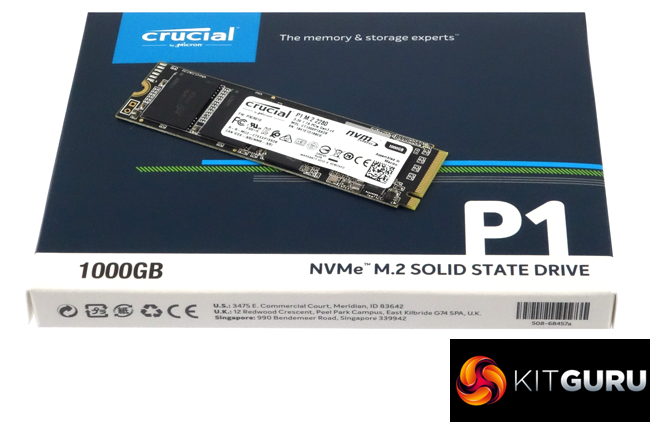It's been a long time coming but at long last Crucial has entered the NVMe SSD fray with the P1, a range of drives that forsakes MLC or TLC NAND to use the latest NAND evolution, 3D Quad-Level Cell (QLC) NAND supporting 4-bits per cell.
At launch the P1 range consists of just two capacities, 500GB and 1000GB (1TB). Both these drives are built on a single-sided format but these will be joined shortly by a 2TB flagship drive that uses both sides of the PCB to house the NAND chips.
Performance wise Crucial quotes official Sequential speeds for the 1TB drive at up to 2,000MB/s for reads and up to 1,700MB/s for writes. We could confirm these figures with the ATTO benchmark as our P1 sample produced a read figure of 2,003MB/s with writes coming in at 1,714MB/s. Random 4K performance for the 1TB drive is quoted as up to 170,000 IOPS for reads and up to 240,000 IOPS for writes.
In our 4K testing we couldn't get anywhere near that read figure, the best we saw was 67,309 IOPS. On the other hand when it came to tested 4K random writes we got pretty near that maximum 240,000 IOPS figure, with 235,545 IOPS at a QD of 8.
Like many of today's SSDs, Crucial's P1 uses an SLC buffer to boost performance but with QLC NAND this is needed more than ever. Crucial's caching solution is called Hybrid-Dynamic Write Acceleration technology. It's labelled Hybrid-Dynamic because as well as a static allocation, the technology can use up to 14% of the drive's capacity if it has the free space available. The problem is that the cache size shrinks from 100GB when the drive is empty to around 12GB as the drive fills with data, meaning there is a corresponding loss in performance.
The drive's label doesn't contain a copper layer too, so the P1 does get rather toasty when really being pushed. Although it's unlikely to get pushed as hard in real life as it does during strenuous benchmarking, it might be an idea that to make sure there is sufficient cooling around the drive to safeguard against any thermal throttling.
We don't yet have a buy link for the P1 but we have been told to expect pricing around £185.
Pros
- Good performance while the drive is reasonably empty.
- Crucial Storage Executive Software.
- 5-year warranty.
Cons
- Performance drops in relation to the drive being filled with data.
- Gets pretty hot when really pushed.
KitGuru says: It's good to see Crucial finally enter the NVMe SSD market and it's interesting that they've chosen a QLC NAND equipped SSD drive to be their first model in the market space.
 KitGuru KitGuru.net – Tech News | Hardware News | Hardware Reviews | IOS | Mobile | Gaming | Graphics Cards
KitGuru KitGuru.net – Tech News | Hardware News | Hardware Reviews | IOS | Mobile | Gaming | Graphics Cards




